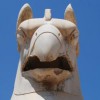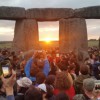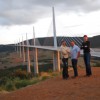Several decades ago Dubai’s Sheikh Rashid bin Saeed Al Maktoum, realizing that oil reserves would one day be exhausted, began a process to diversify the economy to relieve it of the dependence on oil and gas. You might be surprised to learn that today fossil fuels only constitutes 6% of Dubai’s GDP, tourism, financial services and construction makes up the majority. This is one reason that Dubai has seen such an explosion in the construction of business facilities and attractions (closely associated to one of the dozen malls) to lure the business community and holiday makers.
Dubai’s authorities sweeten the deal by offering no income tax and by building the world’s largest or most lavish attractions. Dubai wasn’t immune to the financial crisis that occurred from 2008, with tourist numbers being down and taxi drivers are feeling the pinch from the lack of the lucrative European fares. However since those dark financial days Duba has bounced back thanks to an age of even cheaper credit, mean many of the bigger and more ambitious projects are back – such as ‘The World’ island development and Palm Jebel Ali.
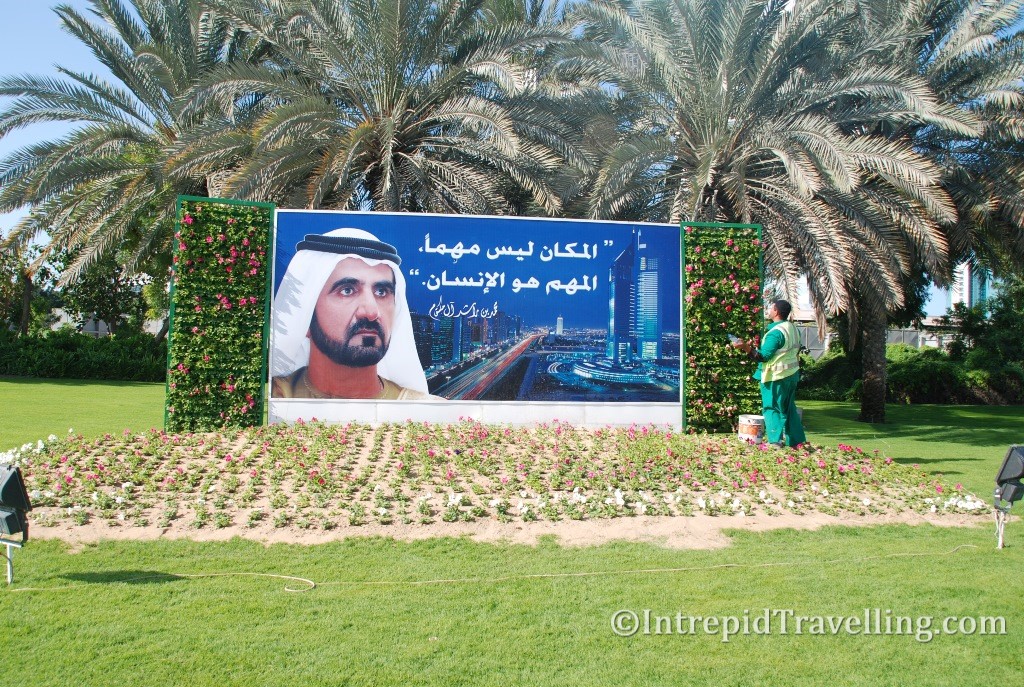
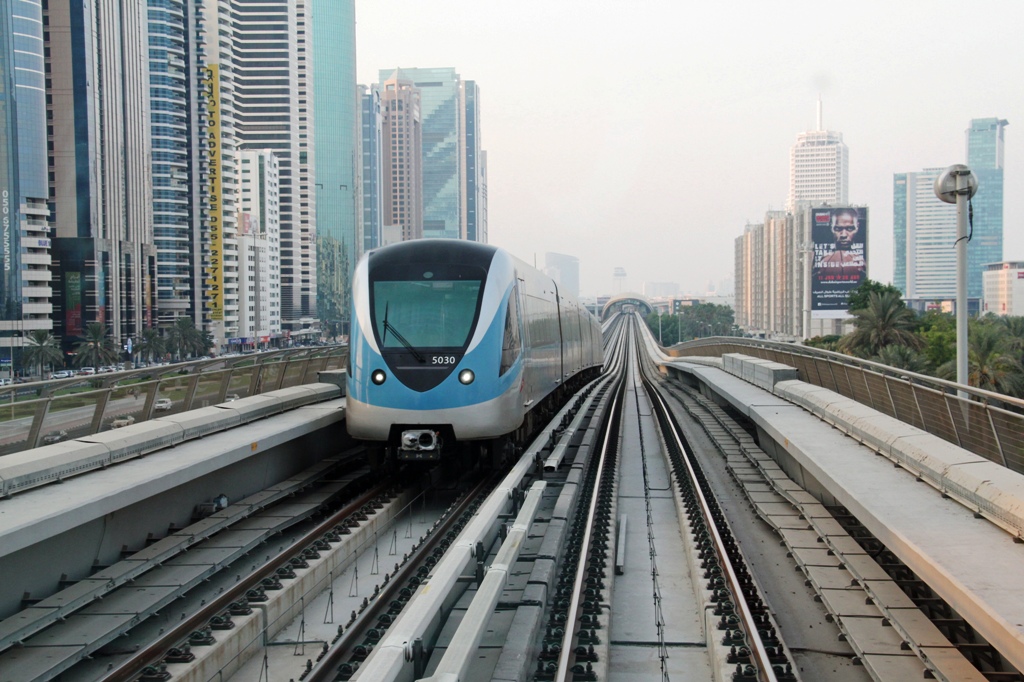
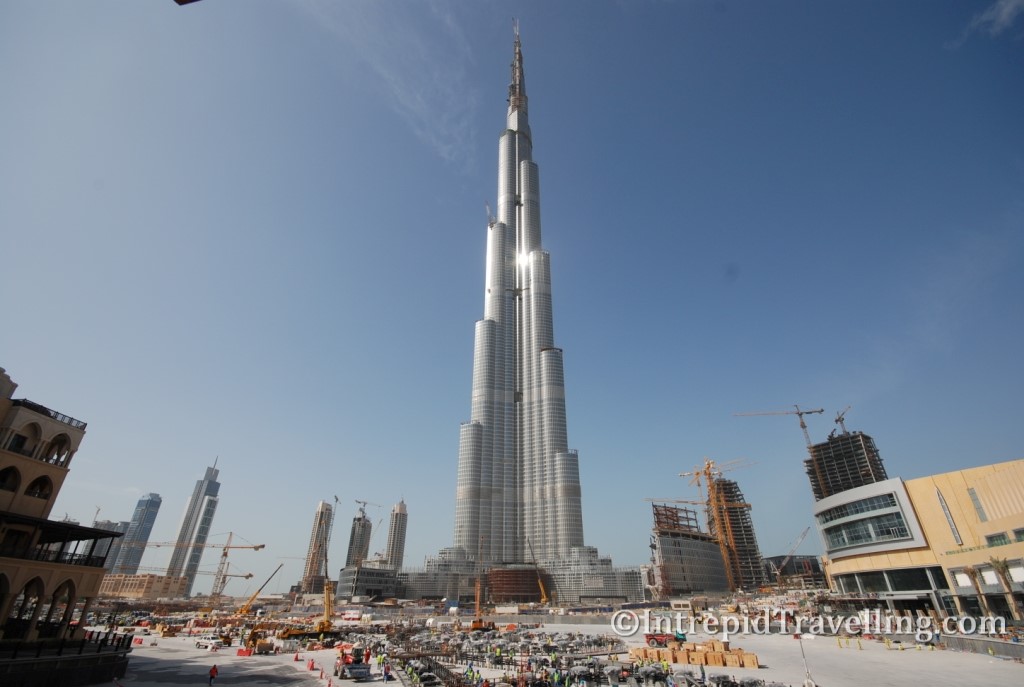
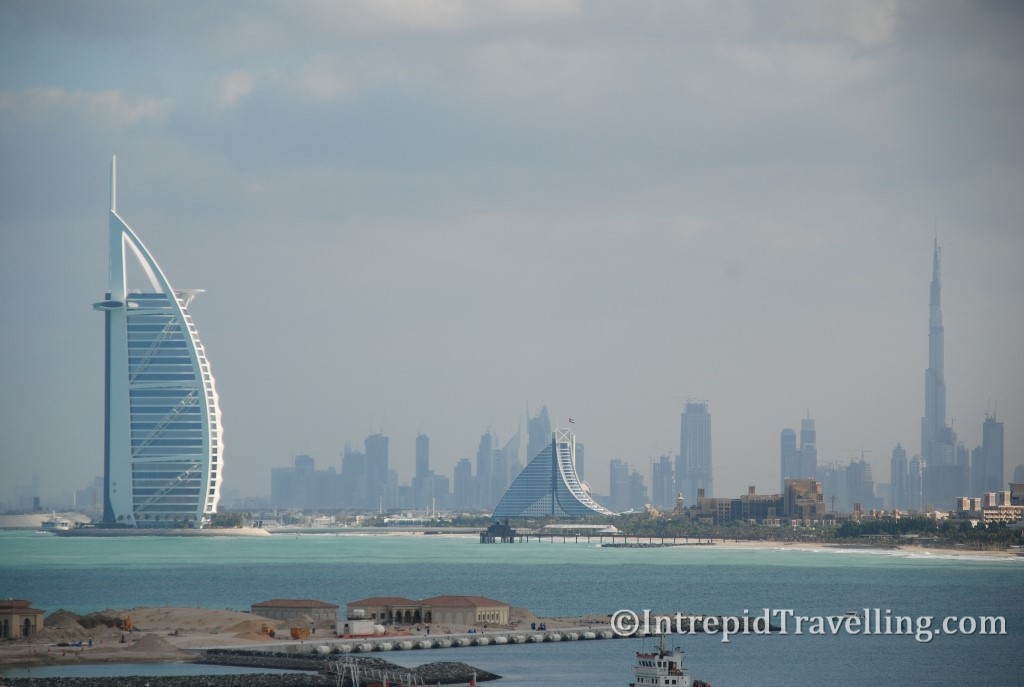
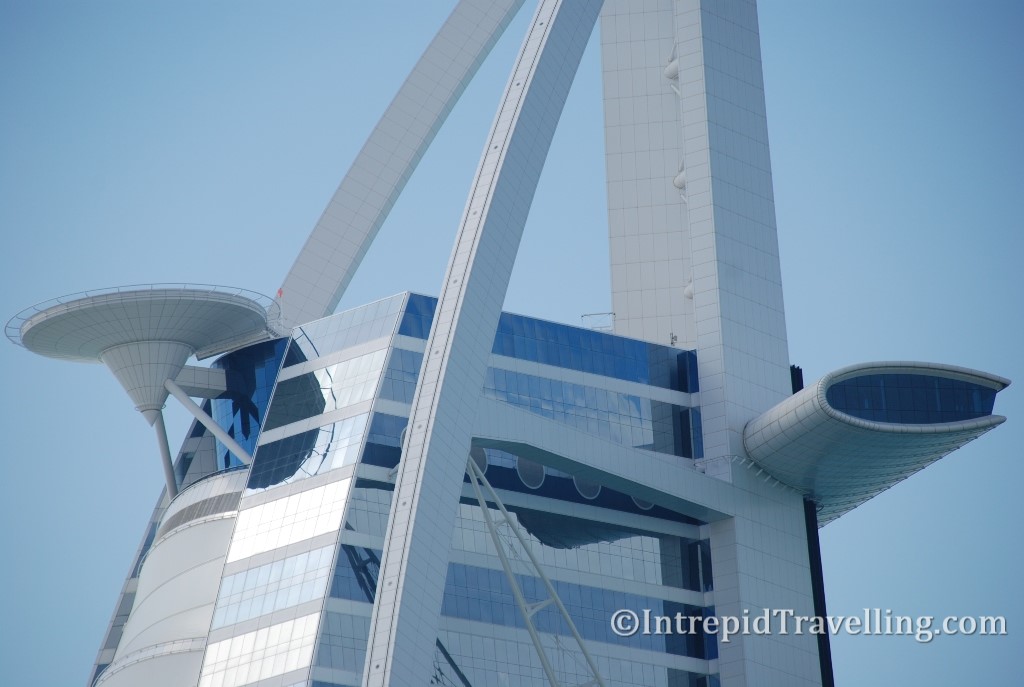
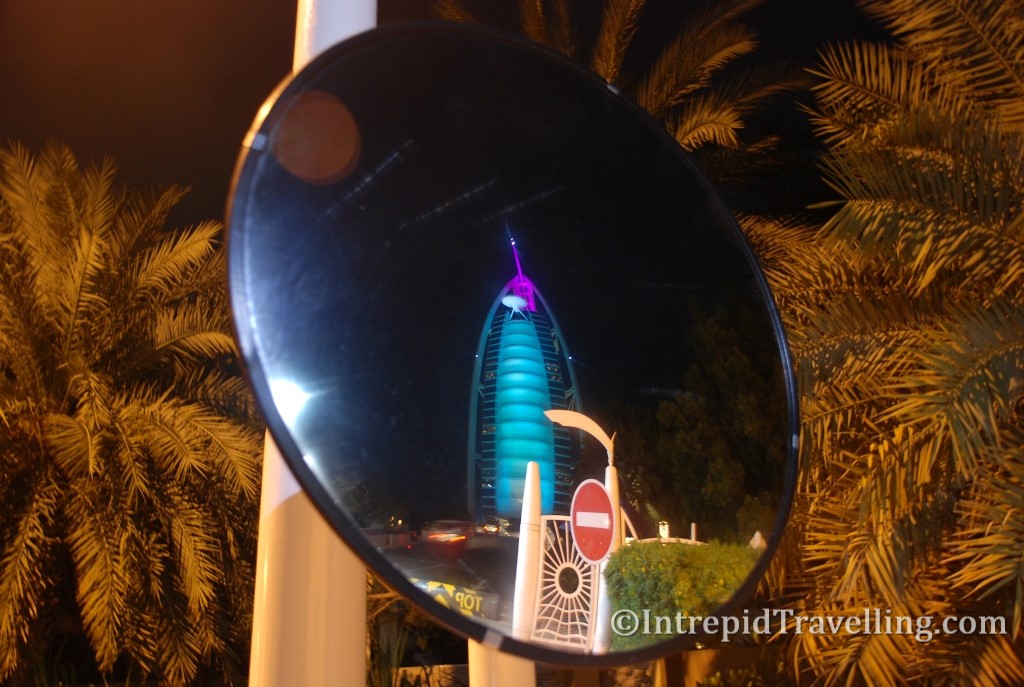
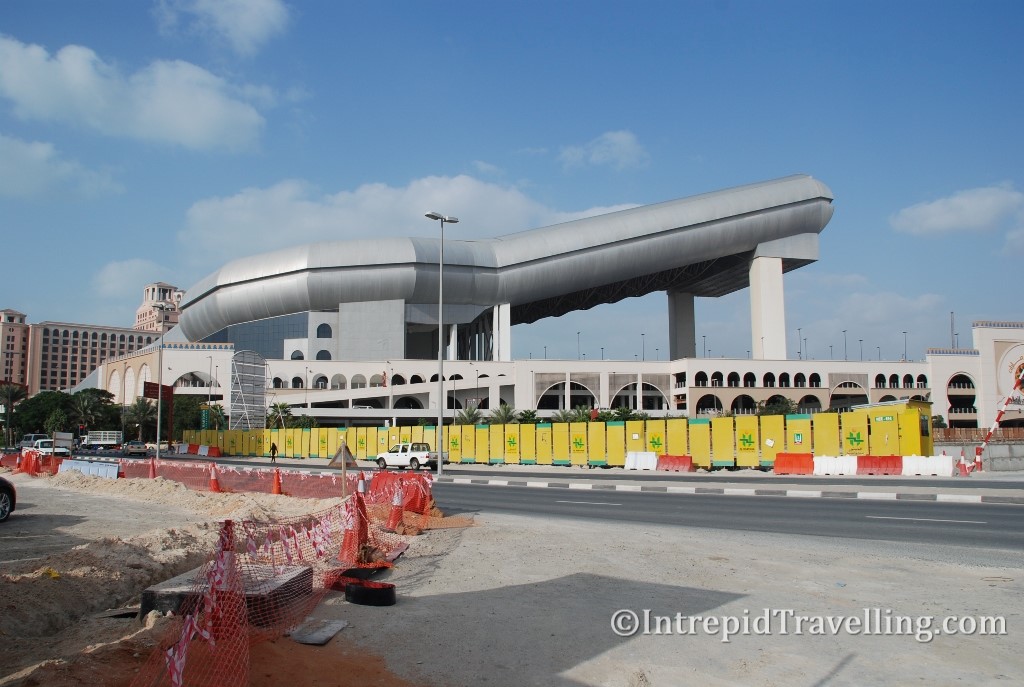
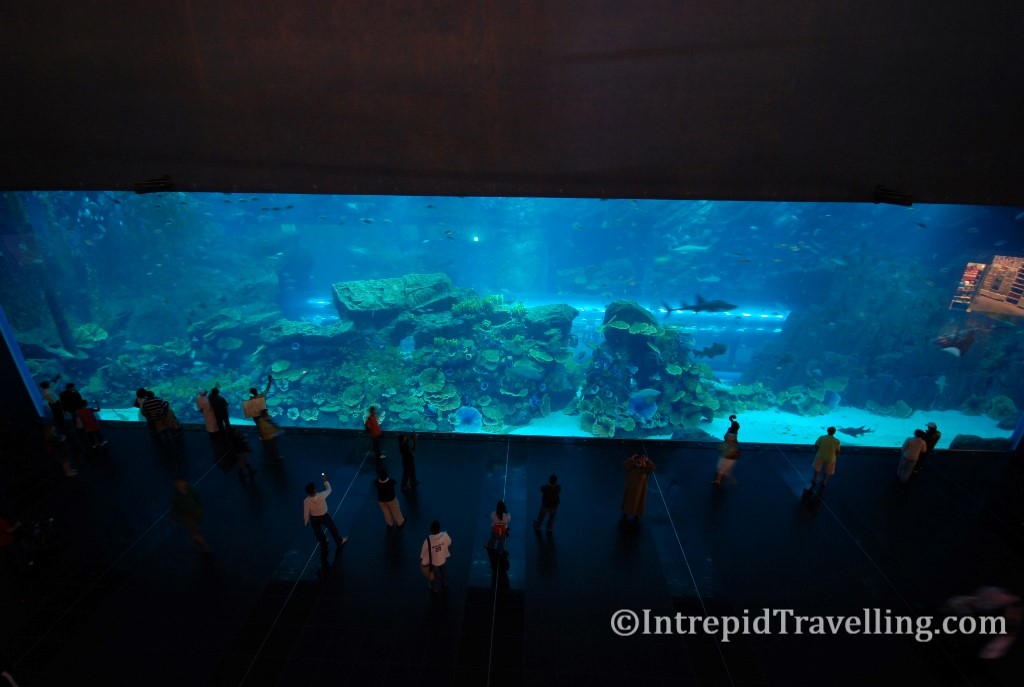
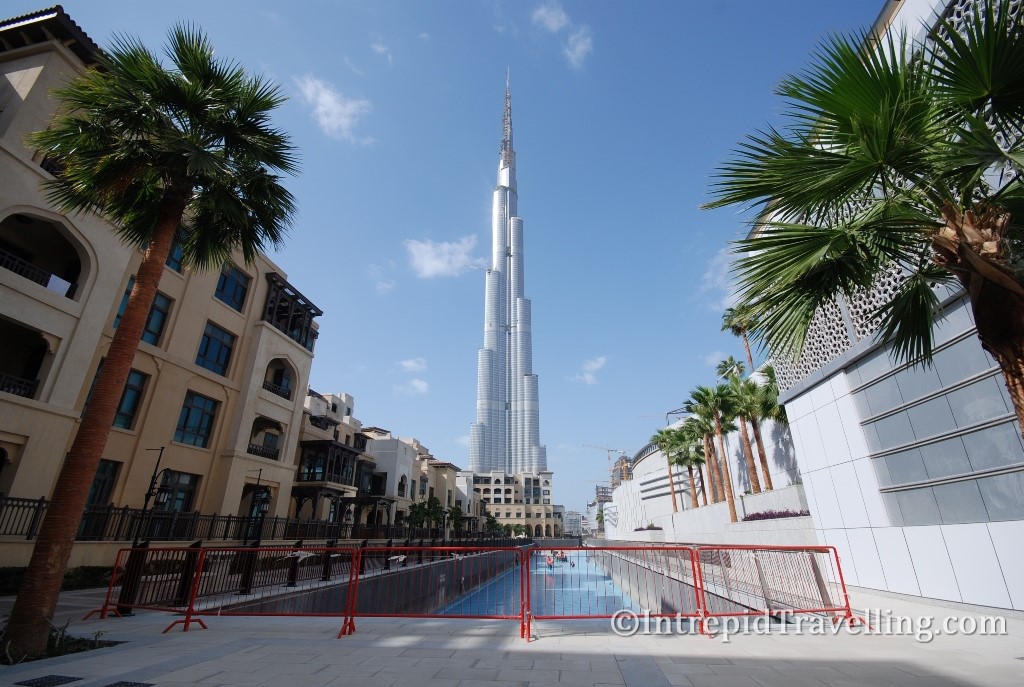
For those who have been to Dubai, will know that Dubai isn’t a very pedestrian friendly place; for a number of reasons. Maybe it’s the large distances or (for most of the year) the downright uncivilized temperatures that hover in the 40’s. Whatever the reason, it has meant there aren’t many footpaths, fewer pedestrian crossings and even less overhead walkways; it’s a city ruled by malls, air conditioning and cars! So for someone (such as an intrepid traveller) dependent on, “shank’s pony” and local buses, crossing a nine lane highway to yet another sandy shoulder to reach the bus stop, becomes a daily occurrence. People are often surprised to hear there is a local bus system in Dubai, it is called dubai-buses which can get you the length of the city for a fraction of the taxi fare. You’re not likely to see many local Emiratis onboard; its predominately used by the subcontinent expatriate workers. The other popular public transport which opened in September 2009, is the Dubai Metro; an ultra modern, $8 billion USD, driverless rail system connecting the old town of Deria with the modern attractions and construction to south along the coast.
The residential area around the man-made Dubai Maria, is home to an unimaginable amount of newly constructed apartment buildings. While exploring the area, I can’t help but wonder how they could not be over supplying the hotel and apartment market,; it’s quite the sight to see if you’re visiting Dubai. Oversupply or not, it wouldn’t matter, I’m told the cash rich Abu Dhabi emirate would never let Dubai go bankrupt, and they didn’t, as they provided financial aid during the GFC.
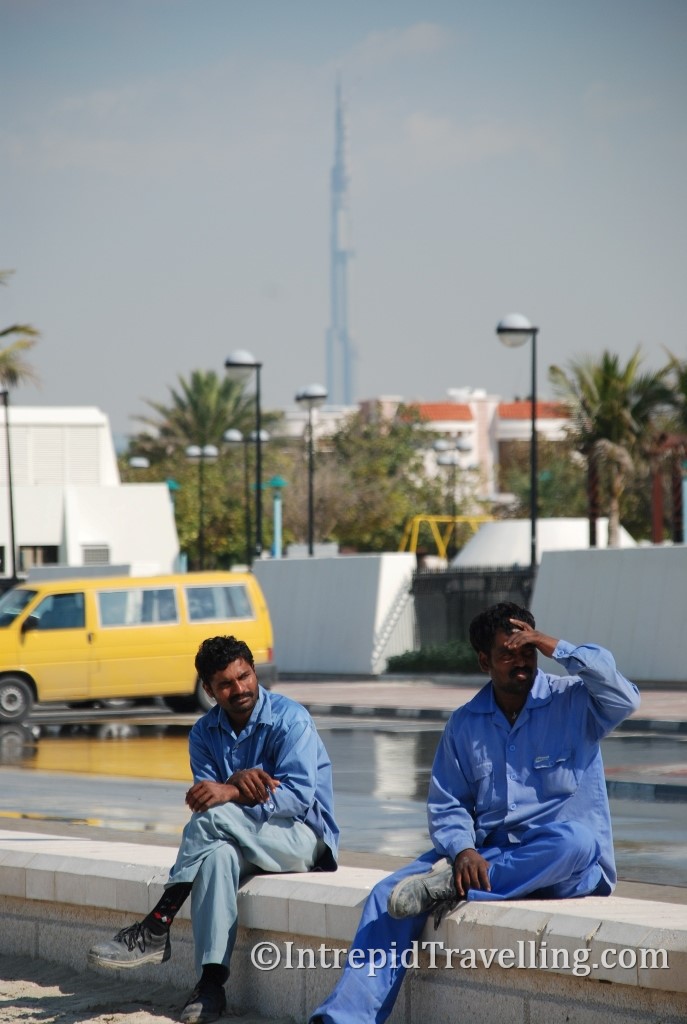
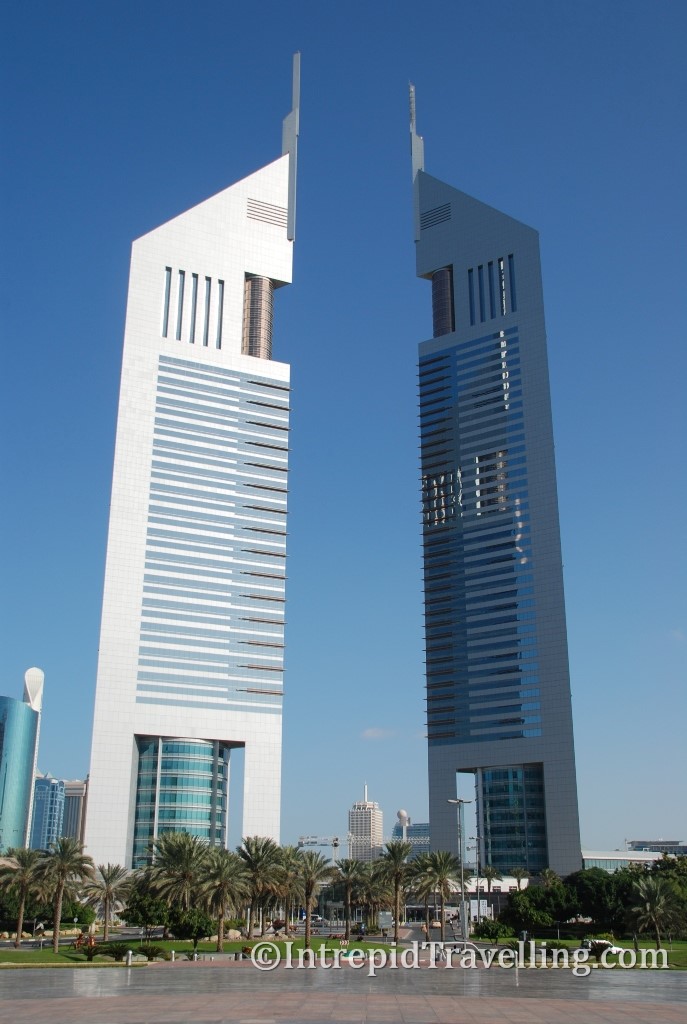
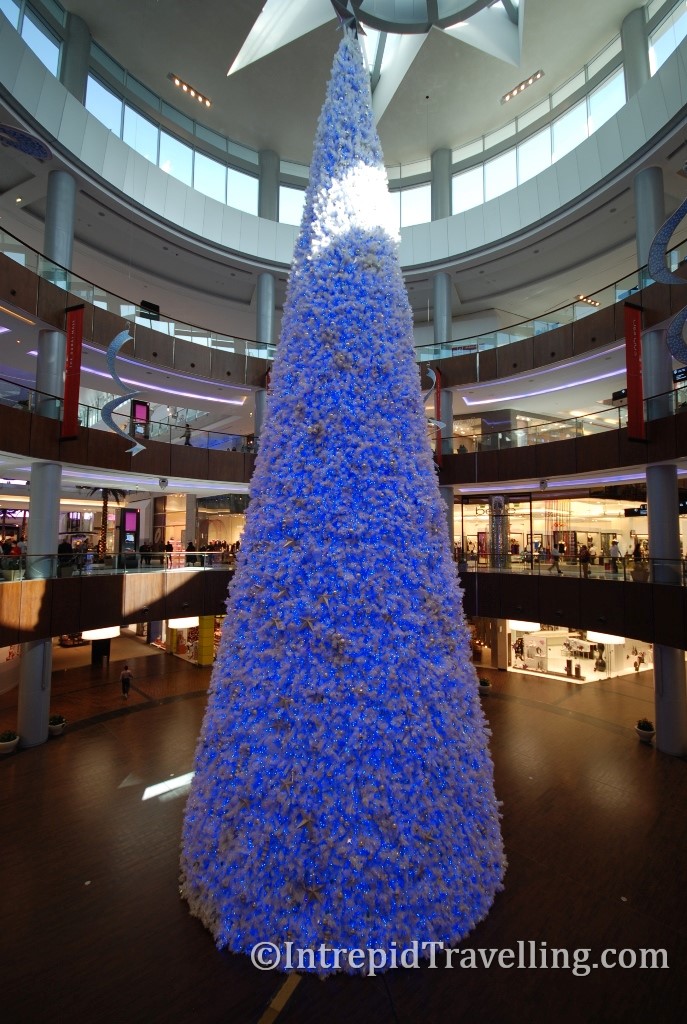
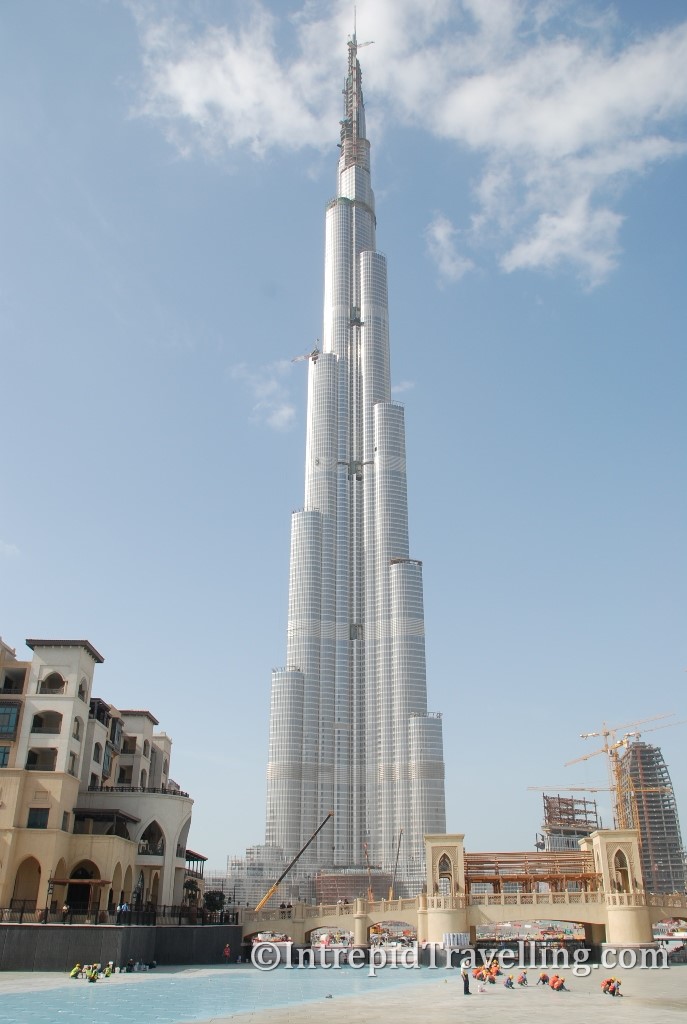
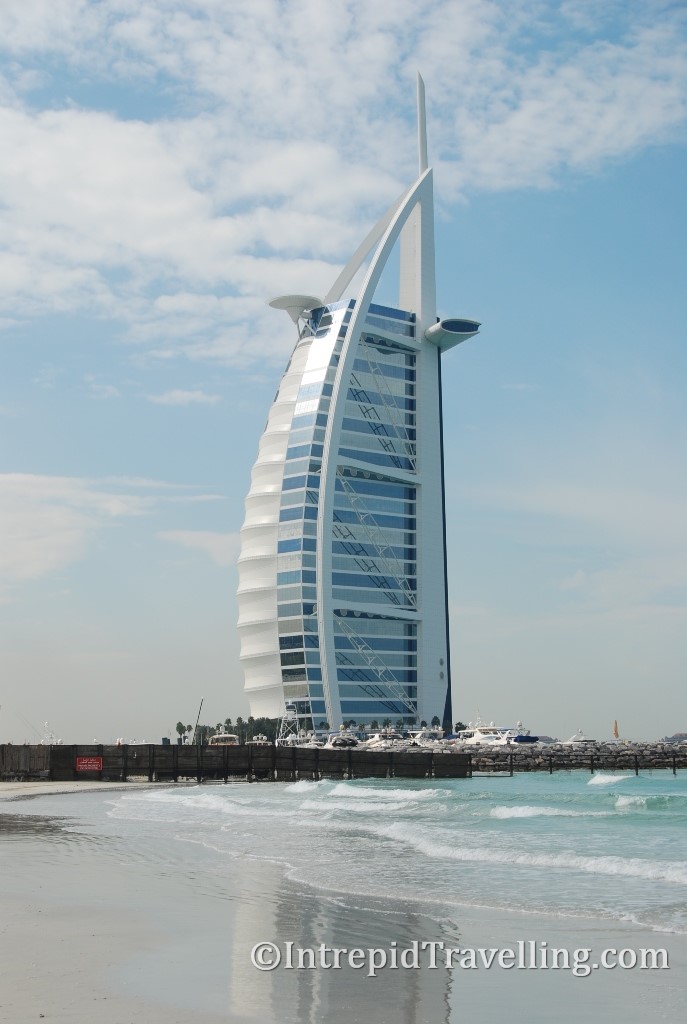
The U.A.E. isn’t a traditional backpacker destination mainly because accommodation is expensive; it really helps if you know people in Dubai who you can visit as it’s a difficult place to be a budget traveller. Not surprising when the Dubai brand is high luxury. I was very lucky to visit and stay with Gemma) my sisters friend) and then with Derrek an old workmate from my days working in New Zealand.
Derrek lived in one of the shoreline apartments on Palm Jumeirah, so definitely an amazing contact for me! Derrek had a sweet setup, but I was told early on if I didn’t behave I would be going straight back to where I came from. I must have behaved, because I spent two glorious weeks living my own Arabia dream. From the balcony of Derreks apartment, there were clear views down past the Burj Al Arab hotel to downtown Dubai. An impressive skyline at the moment, and it’s incredible to think the majority of the 400m+ buildings are still in the early stages of construction, it’s going to be a very different place by 2015-2020.
Dubai has built its image/brand around excess and having the biggest and best. To name a few the iconic Burj Al Arab hotel (the world’s only 6-star hotel), the world’s largest indoor ski resorts attached to one of the world’s largest malls - Mall Dubai, complete with a full sized ice rink and the world’s largest aquarium window! And possibly the largest Christmas tree? However the centre piece of the USD $20 billion dollar Mall Dubai complex is the Burj Dubai (Dubai Tower) which was renamed the Burj Khalifa in honour of the Abu Dhabi ruler who provided financial help during the 2008 GFC. At a mind-blowing 830m and costing USD $4.1 billion, this super skyscraper dwarfs the world’s previous tallest building by over 300m and represents a leap in construction equivalent to Bob Beamon’s long jump effort back at the ’68 Olympics. There is something strangely hypnotic about the Buij Khalifa which probably comes from a sense of disbelief. It’s one of those few sights that exceed even the hype. There is talk of future projects that will top out over 1000m! I’ll be back to see them if they make it off the drawing board.
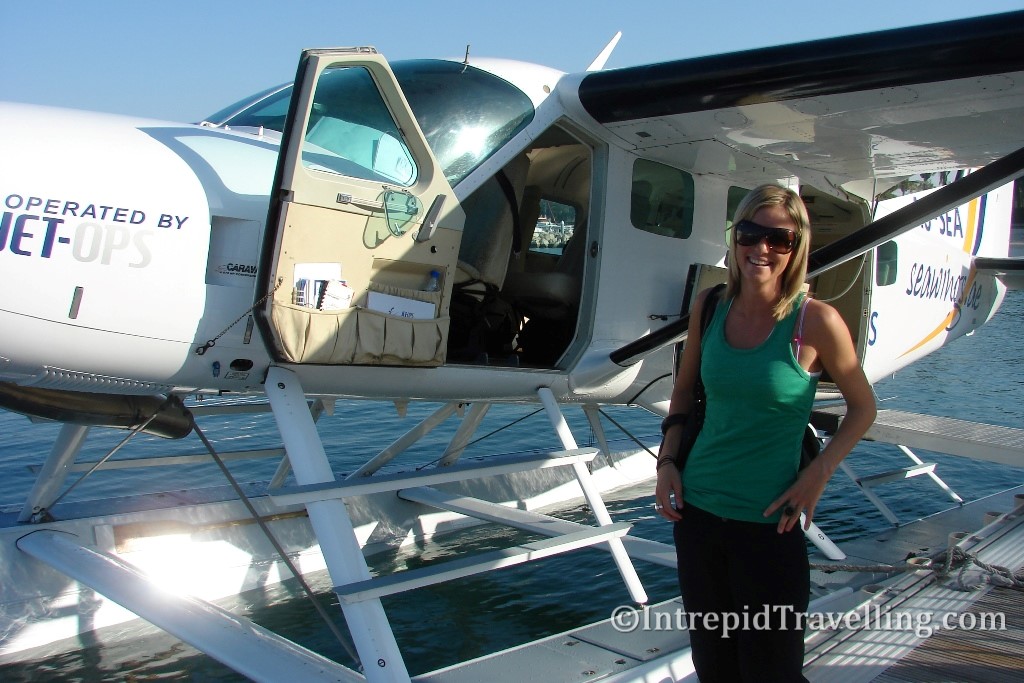
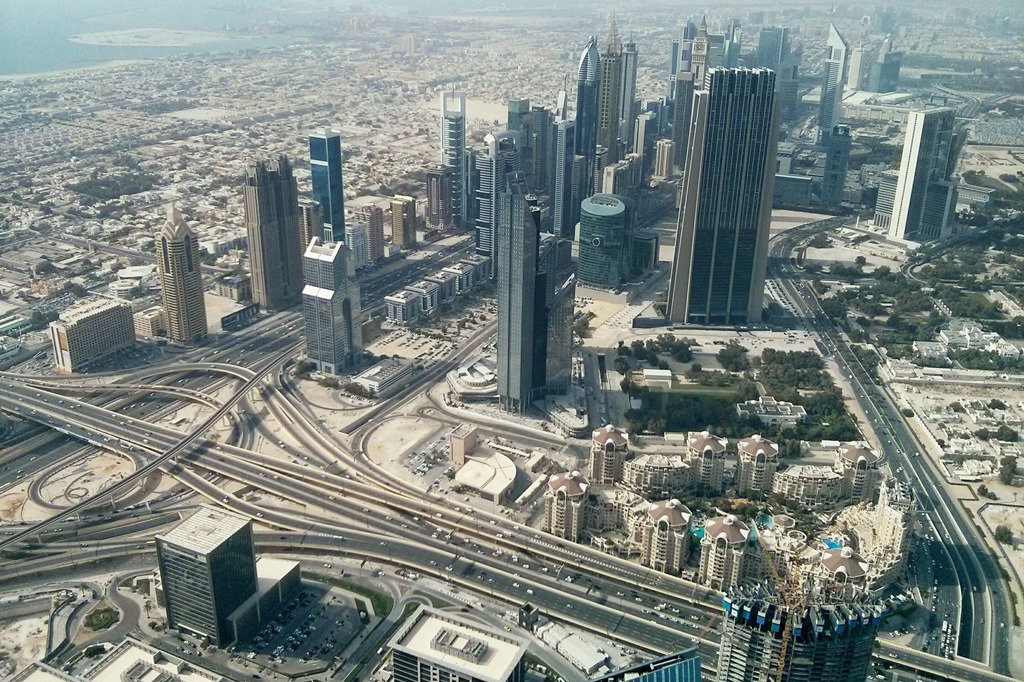
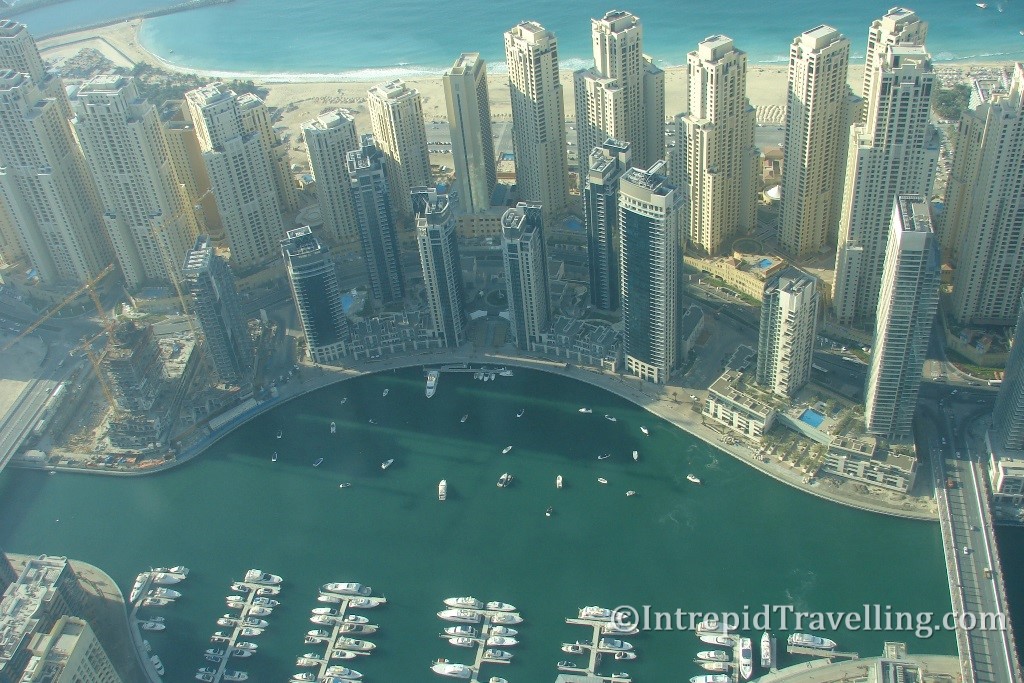
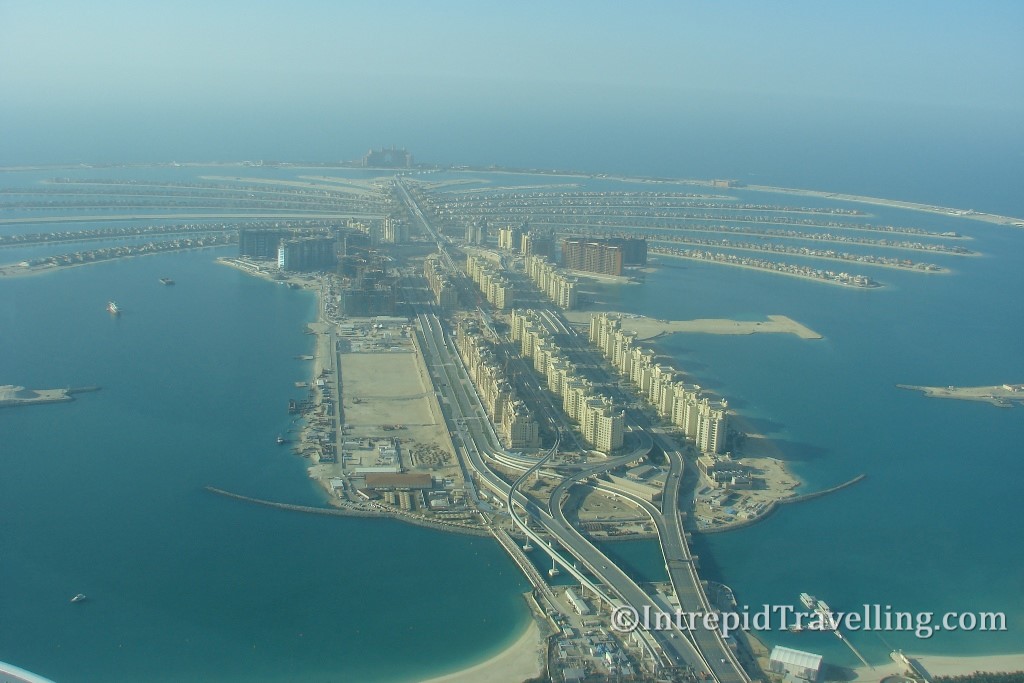
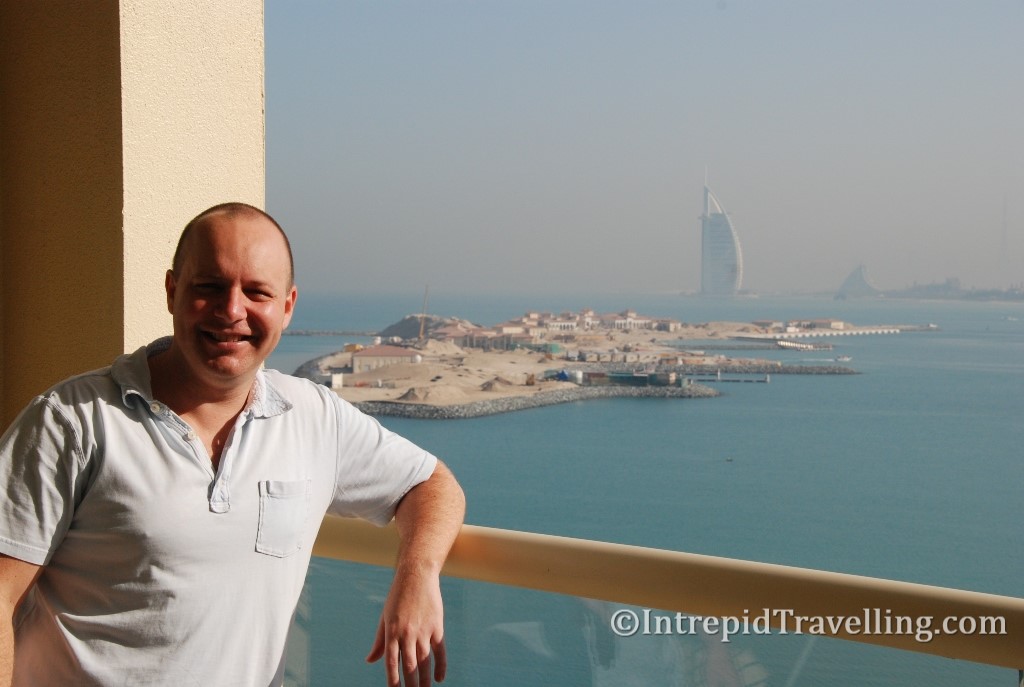
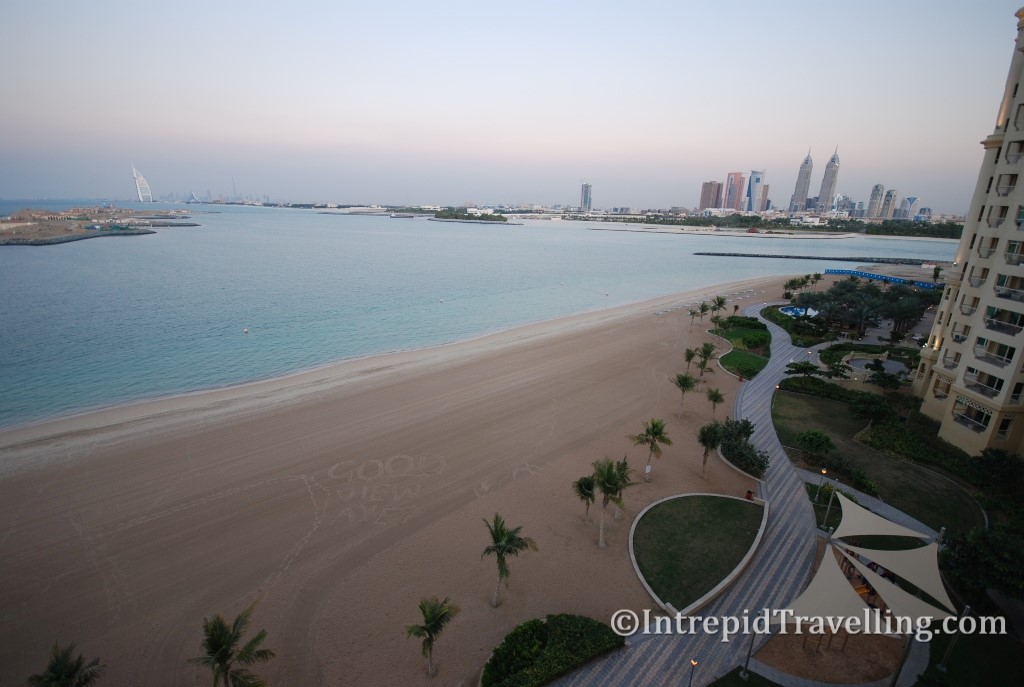
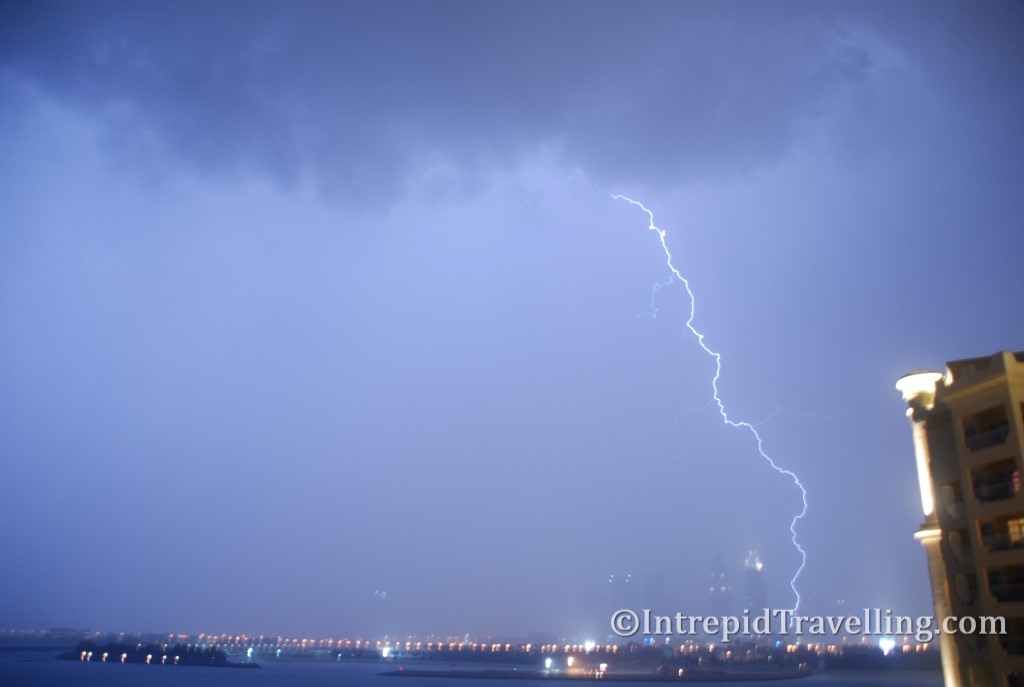
If you’re wondering how such a small nation has the man power construct a city in no time, well in short, it’s down to South Asian immigrant workers from Pakistan, India and Bangladesh. As a result the U.A.E. has the highest male/female sex ratio in the world (2.74) and the highest foreign born citizen percentage in the world. Only 19% of the population is Emirati – an overwhelming minority in their own country, but don’t worry, they still hold all the power. Incidentally Filipinos seem to dominate the service industry workforce.
My initial thought about Dubai, as we drove down Sheikh Zayed Rd, was ‘what a freak show’. It’s a modern wonder, and a modern city based on a centralised mall built, literally, on the edge of a desert like something out of Simcity, which then attracts all the amenities and residential buildings. Coming from New Zealand, a country of limited means and vision, it’s mind blowing to see the scale of construction and the amount of money being thrown at it. I thought it was impressive when I visited in 2009 – yet I probably won’t even recognise it now! They’re certainly not doing anything in halves, make or break, and I suspect we’re going to hear a lot about this place in the coming decades.
While In Dubai, if you have the time, make the effort to travel overland to Muscat, Oman’s unique capital. Buses leave Dubai for Muscat twice daily and take about 6-7hours departing from the ONTC bus station in Deria. Ticket prices vary but expect to pay 60 dirhams for a one-way and 90 for a return ticket. Alternatively try Al Khanjry Transport which run a number of modern buses. It’s worth the trip and most nationalities can get an entry visa stamp at the Oman border, but check beforehand to avoid issues.

